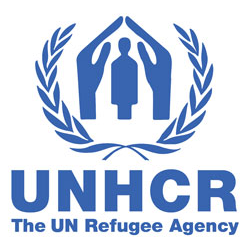Main Debates
- Is the EU legislation on qualification for protection consistent with the 1951 Geneva Convention?
- How should the 1951 Geneva Convention exclusion clauses be applied in the context of the ‘fight against terrorism’?
- Do notions such as internal protection and non-state agents of protection, as well as procedural devices such as accelerated procedures, undermine or threaten effective access to refugee protection under the 1951 Convention in some cases?
Main Points
Different interpretations of the refugee definition among Member States:
- Persecution by non-state agents
- Protection by non-state agents
- Gender and sexual orientation
- Refugees sur place
- Internal flight alternative
- Compatibility of rules on exclusion, revocation, cessation with 1951 Geneva Convention
- Differentiation in rights accorded to 1951 Geneva Convention refugees and subsidiary protection beneficiaries
- Cessation and exclusion
EU Documents
- European Union, Directive 2011/95/EU of the European Parliament and of the Council of 13 December 2011 on standards for the qualification of third-country nationals or stateless persons as beneficiaries of international protection, for a uniform status for refugees or for persons eligible for subsidiary protection, and for the content of the protection granted (recast), OJ L 339, 20 December 2011.
- European Commission, Report from the Commission to the European Parliament and the Council on the Application of Directive 2004/EC/EC of 29 April 2004, COM (2010) 314 final, 16 June 2010.
UNHCR Documents
- UNHCR, ‘Guidelines on International Protection No. 10: Claims to Refugee Status related to Military Service within the context of Article 1A (2) of the 1951 Convention and/or the 1967 Protocol relating to the Status of Refugees’, 3 December 2013, HCR/GIP/13/10.
- UNHCR, ‘Guidelines on International Protection No. 9: Claims to Refugee Status based on Sexual Orientation and/or Gender Identity within the context of Article 1A(2) of the 1951 Convention and/or its 1967 Protocol relating to the Status of Refugees’, 23 October 2012, HCR/GIP/12/01.
- UNHCR, ’Comments on the European Commission’s proposal for a Directive of the European Parliament and of the Council on minimum standards for the qualification and status of third country nationals or stateless persons as beneficiaries of international protection and the content of the protection granted’, COM (2009) 551, 21 October 2009, 29 July 2010.
- UNHCR, ’Statement on Article 1F of the 1951 Convention’, July 2009.
- UNHCR, ’Statement on the "Ceased Circumstances" clause of the EC Qualification Directive’, 1 August 2008.
- UNHCR, ‘Asylum in the European Union - A Study of the Implementation of the Qualification Directive', November 2007.
- UNHCR, ’ExCom Conclusion on the Provision of International Protection Including Through Complementary Forms of Protection’, No. 103 (LVI), 7 October 2005, paragraph (k).
- UNHCR, ’Annotated Comments on the EC Council Directive 2004/83/EC of 29 April 2004 on Minimum Standards for the Qualification and Status of Third Country Nationals or Stateless Persons as Refugees or as Persons Who Otherwise Need International Protection and the Content of the Protection Granted’, 28 January 2005.
Cases
- X, Y and Z v Minister voor Immigratie en Asiel, joined cases C-199/12, C-200/12 and C-201/12, Court of Justice of the European Union, 7 November 2013.
- Mostafa Abed El Karem El Kott and Others v. Bevándorlási és Állampolgársági Hivatal, C-364/11, Court of Justice of the European Union, 19 December 2012.
- Bundesrepublik Deutschland v Y and Z, joined cases C-71/11 anbd C-99/11, Court of Justice of the European Union, 5 September 2012.
- Bolbol Nawras v. Bevándorlási és Állampolgársági Hivatal, C-31/09, Court of Justice of the European Union, 17 June 2010.
- Federal Republic of Germany v. B (C-57/09), D(C-101/09), Court of Justice of the European Union, 9 November 2010.
- Aydin Salahadin Abdulla and others v. Federal Republic of Germany, C-175/08, Court of Justice of the European Union, 2 March 2010.
- Bolbol Nawras v. Bevándorlási és Állampolgársági Hivatal, Case C-31/09, Preliminary reference from the Fővárosi Bíróság (Hungary) lodged on 26 January 2009.
- Secretary of State for the Home Department v. K; Fornah v. Secretary of State for the Home Department, 2006 UKHL 46.
See also cases Chahal v. UK (VI.1.2) and Adan and Aitseguer (VI.2.4.1).
Readings
Core
- K. Zwaan (ed.), ‘The Qualification Directive: Central Themes, Problem Issues and Implementation in Selected Member States’ (Nijmegen: Wolf Legal Publishers, 2007).
- M. O’Sullivan, ‘Acting the Part: Can Non-State Entities Provide Protection Under International Refugee Law?’ International Journal of Refugee Law, vol. 24, no. 1 (2012), pp. 85-110.
- D. Kosar, ‘Inclusion before Exclusion or Vice Versa: What the Qualification Directive and the Court of Justice Do (Not) Say’, International Journal of Refugee Law, vol. 24, no.1 (2013), pp. 87-119.
- P.C. Cardwell, ‘Determining refugee status under Directive 2004/83: comment on Bolbol (C-31/09)’, European Law Review, vol. 36, no. 1 (2011), pp. 135-145.
- N. Blake, ‘The Impact of the Minimum Standards Directive 2004/83/EC on National Case Law’, in The Asylum Process and the Rule of Law, IARLJ World Conference publication, April 2005 Stockholm (New Delhi: Manak Publications, 2006).
- M. Gil-Bazo, ‘The Charter of Fundamental Rights of the European Union and the Right to be Granted Asylum in the Union’s Law’, Refugee Survey Quarterly, vol. 27, no. 3 (2008), pp. 33–52.
- J. McAdam, ‘The Qualification Directive: An Overview’, in K. Zwaan (ed.), The Qualification Directive: Central Themes, Problem Issues, and Implementation in Selected Member States, (Nijmegen: Wolf Legal Publishers, 2007).
Extended
- H. Lambert, ‘The EU Asylum Qualification Directive, Its Impact on the Jurisprudence of the United Kingdom and International Law’, International Comparative Law Quarterly, vol. 55 (2006), pp. 161–192.
- H. Storey, ‘EU Refugee Qualification Directive: a Brave New World?’, International Journal of Refugee Law, vol. 20 (2008), pp. 1–49.



